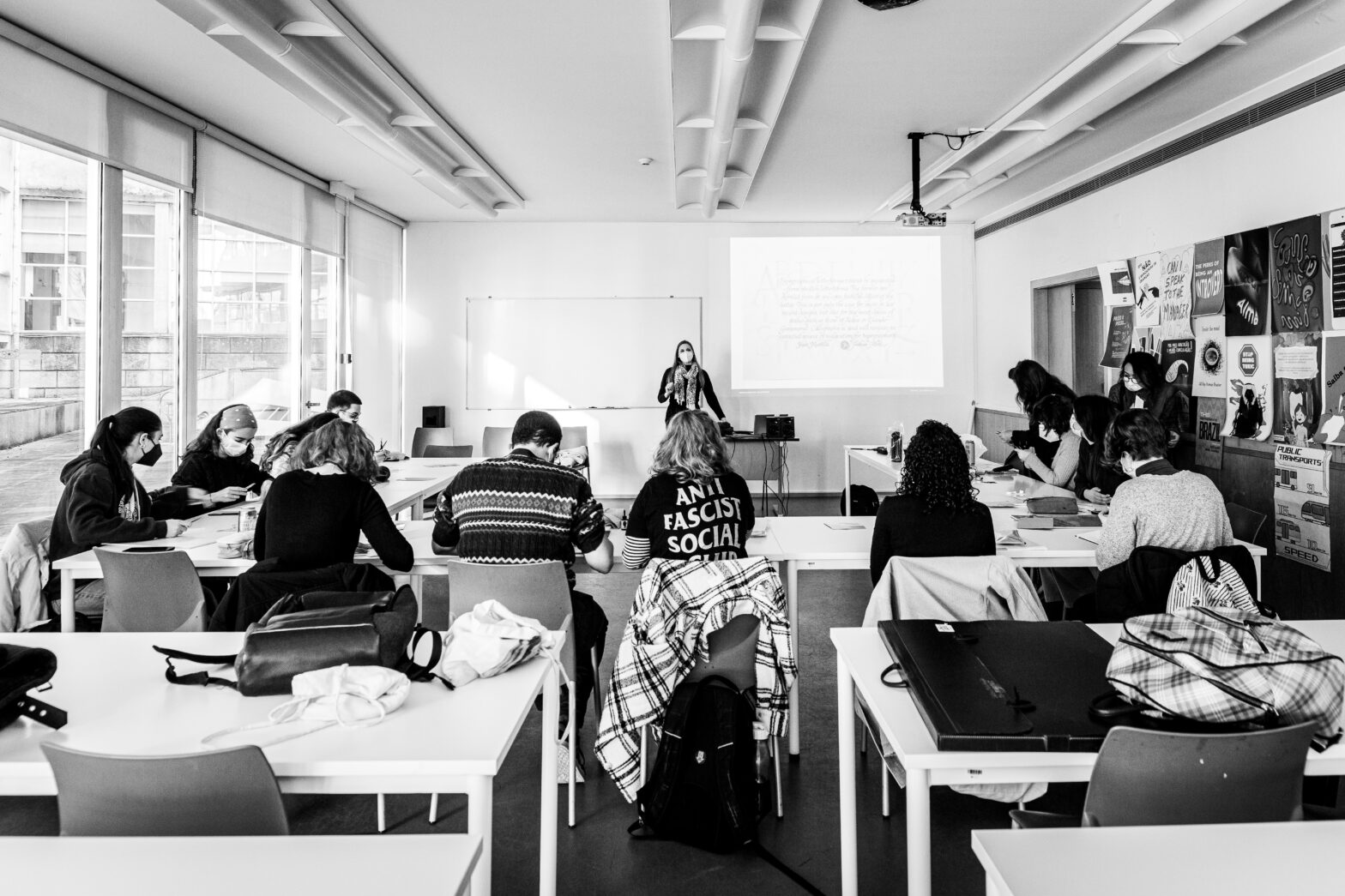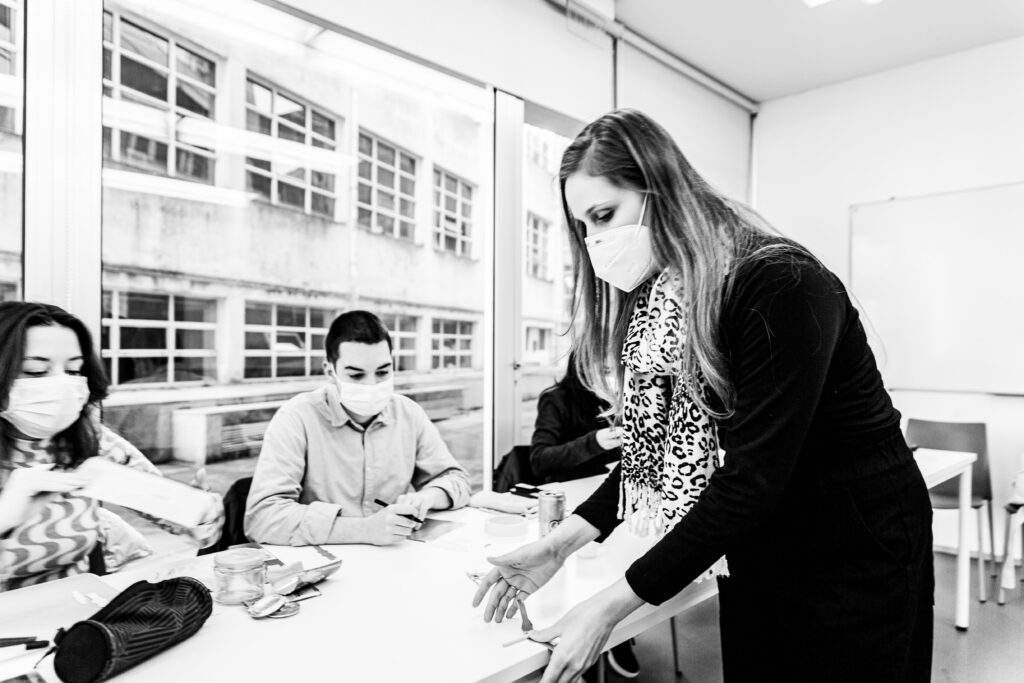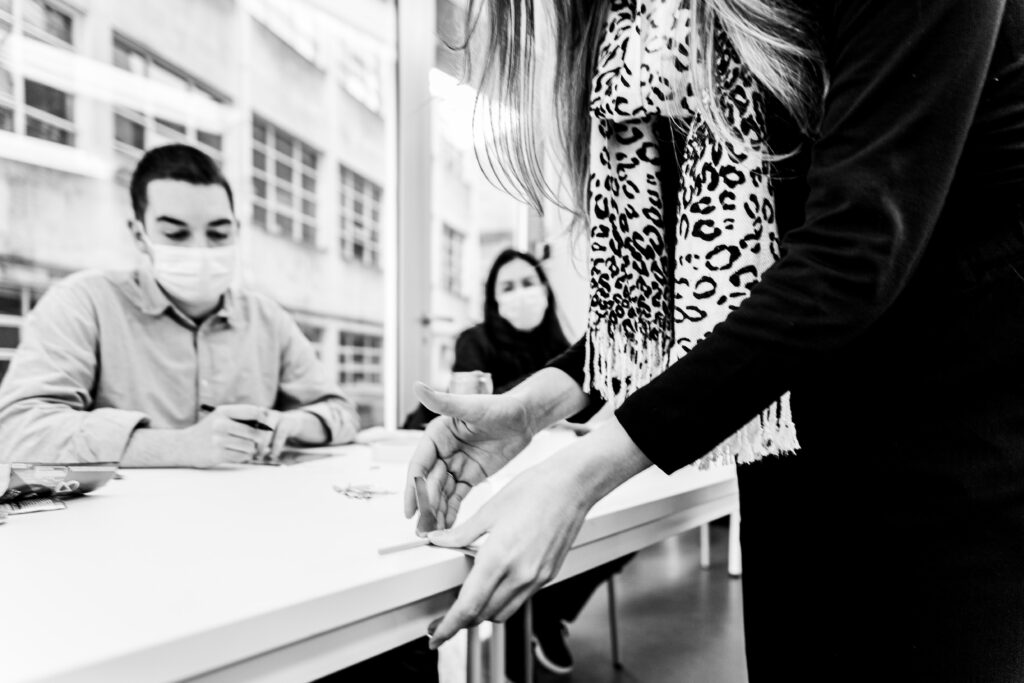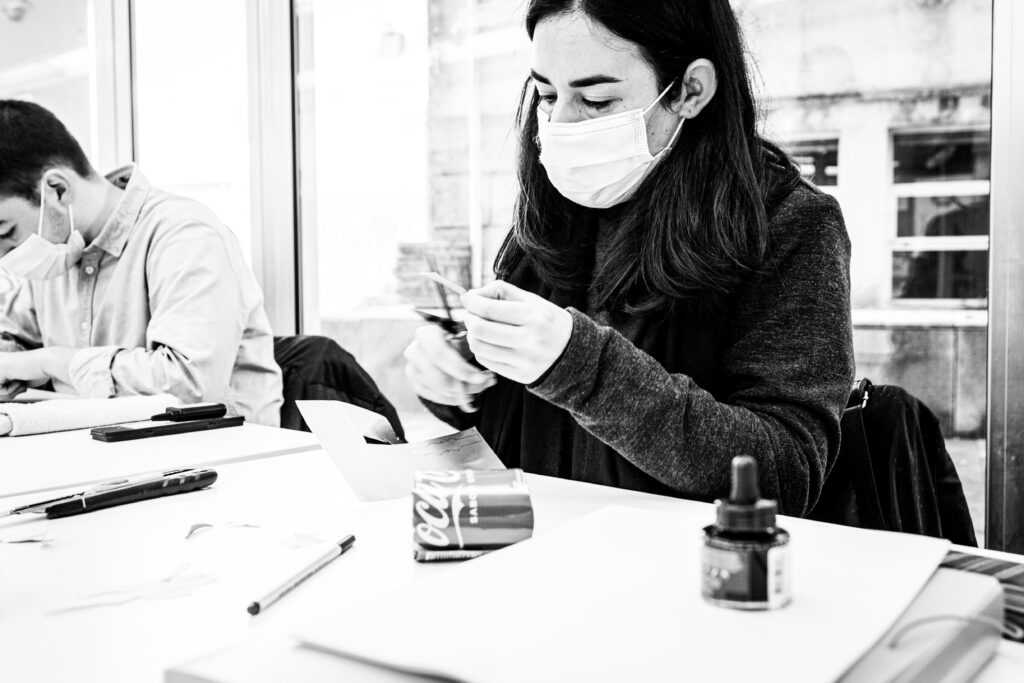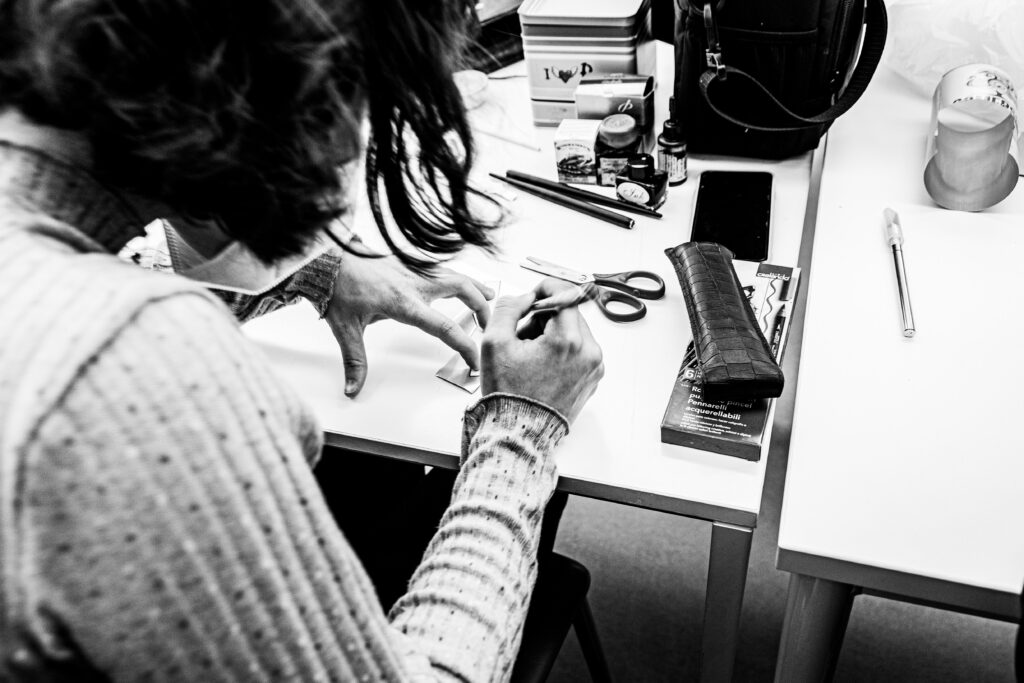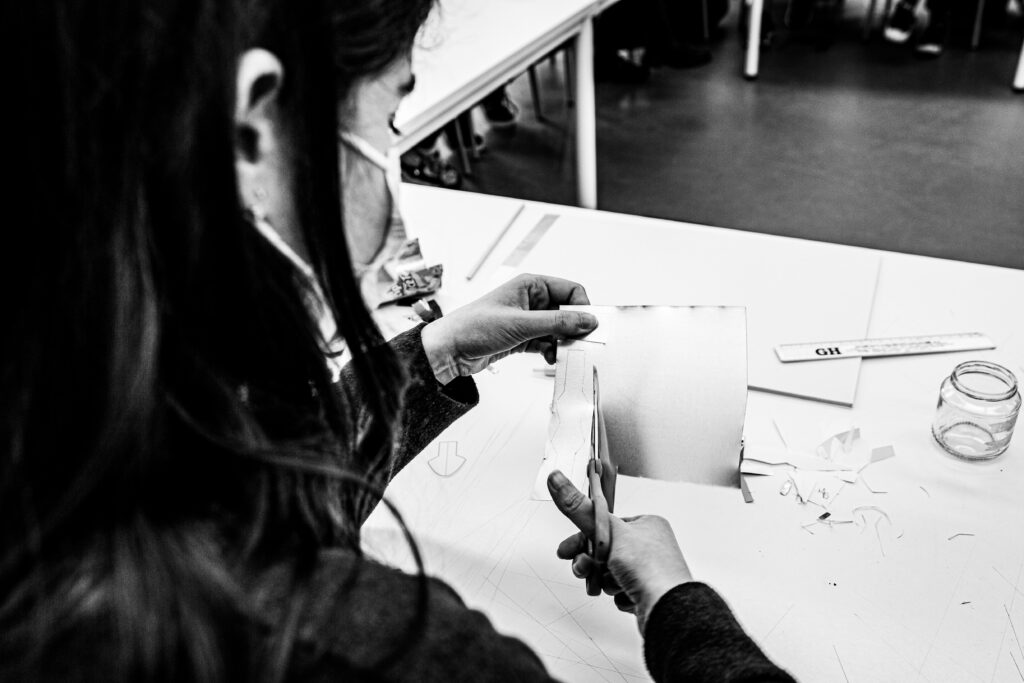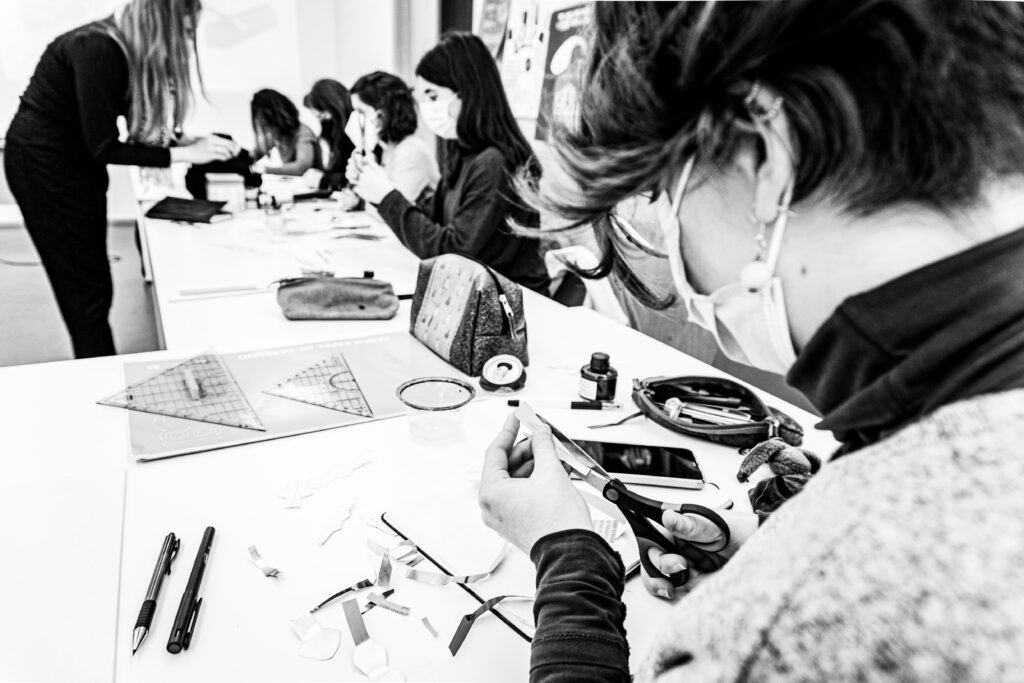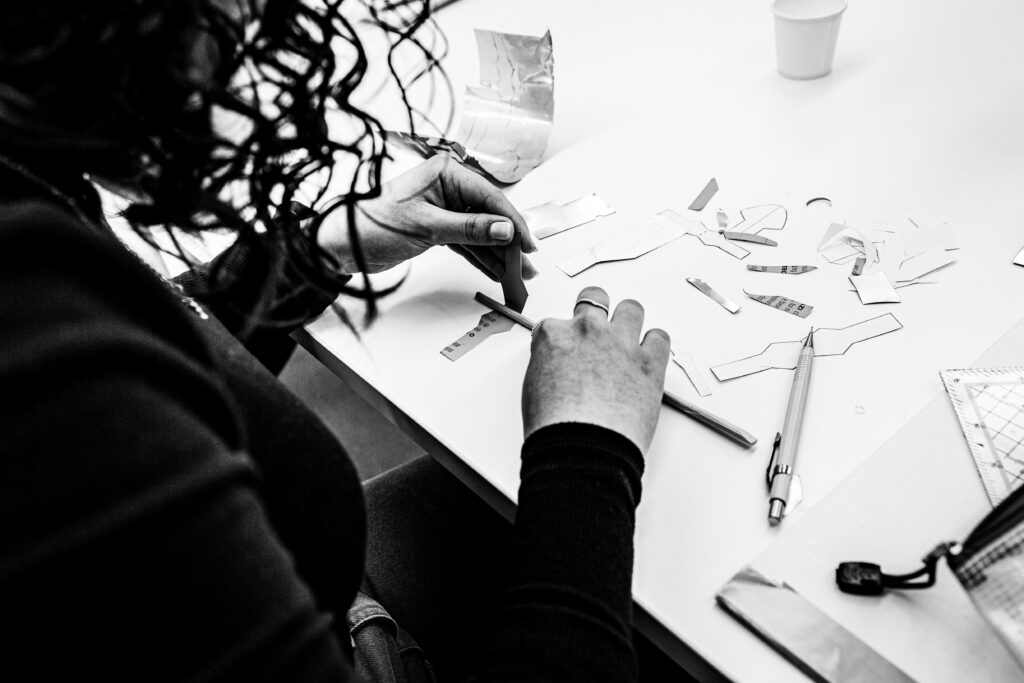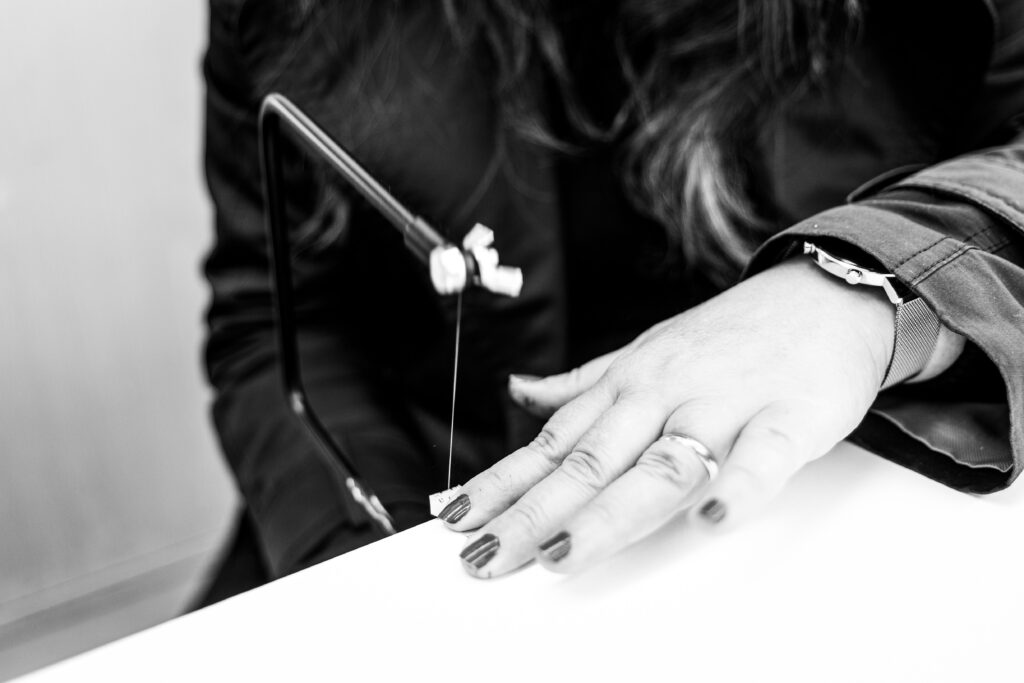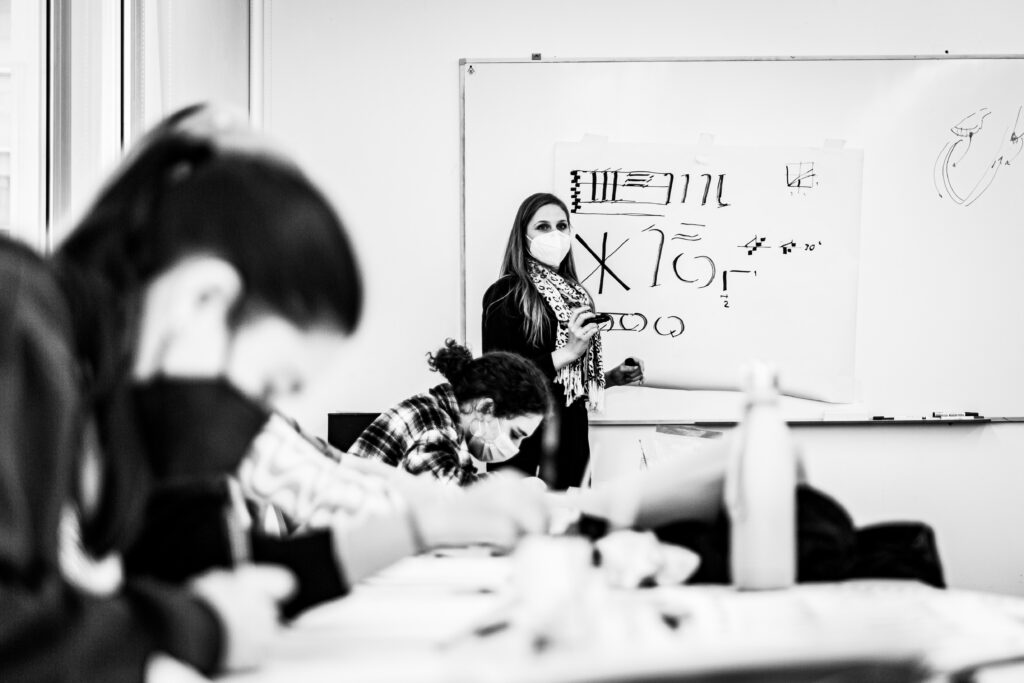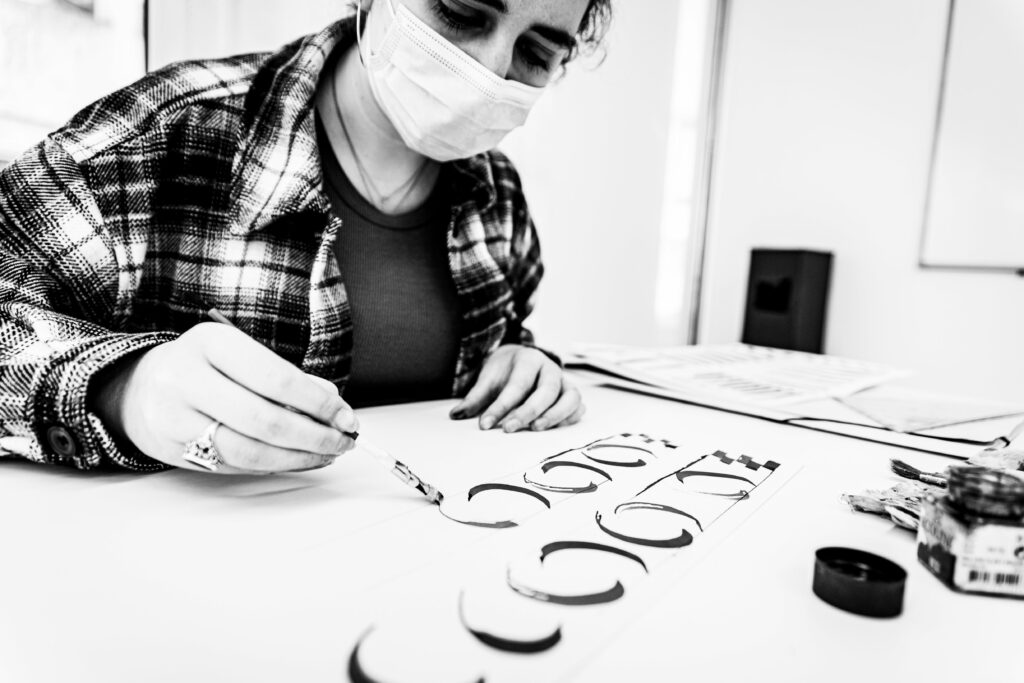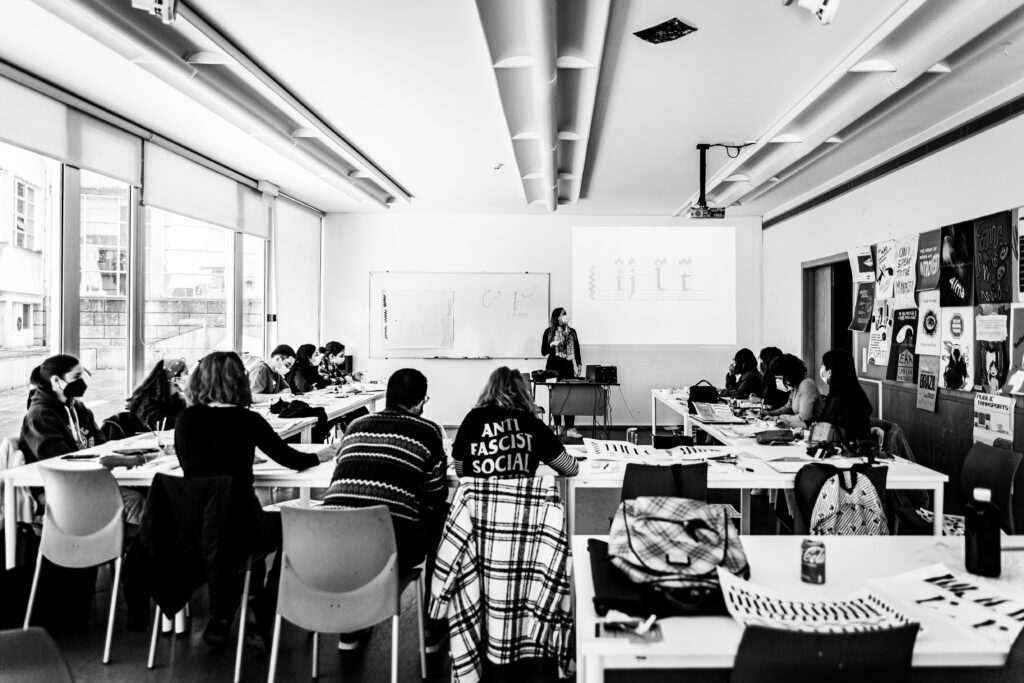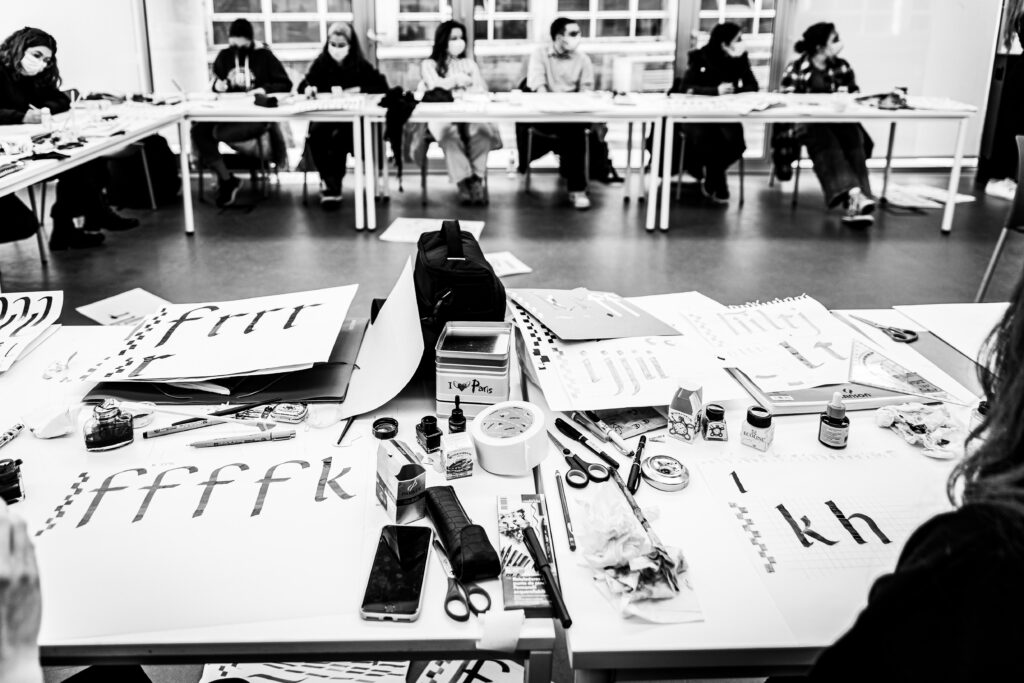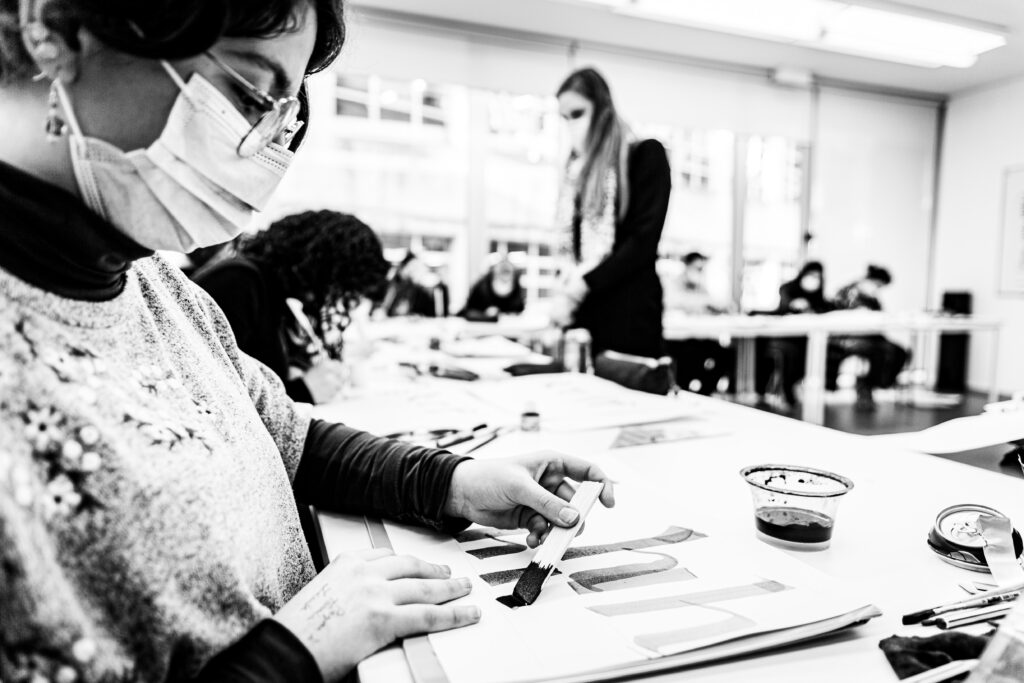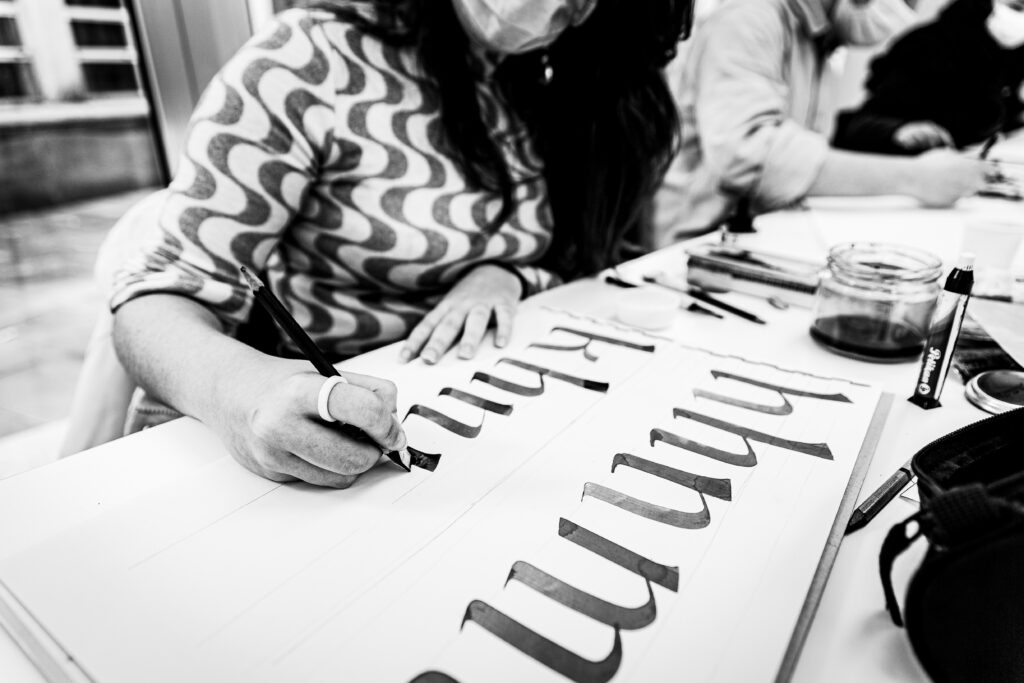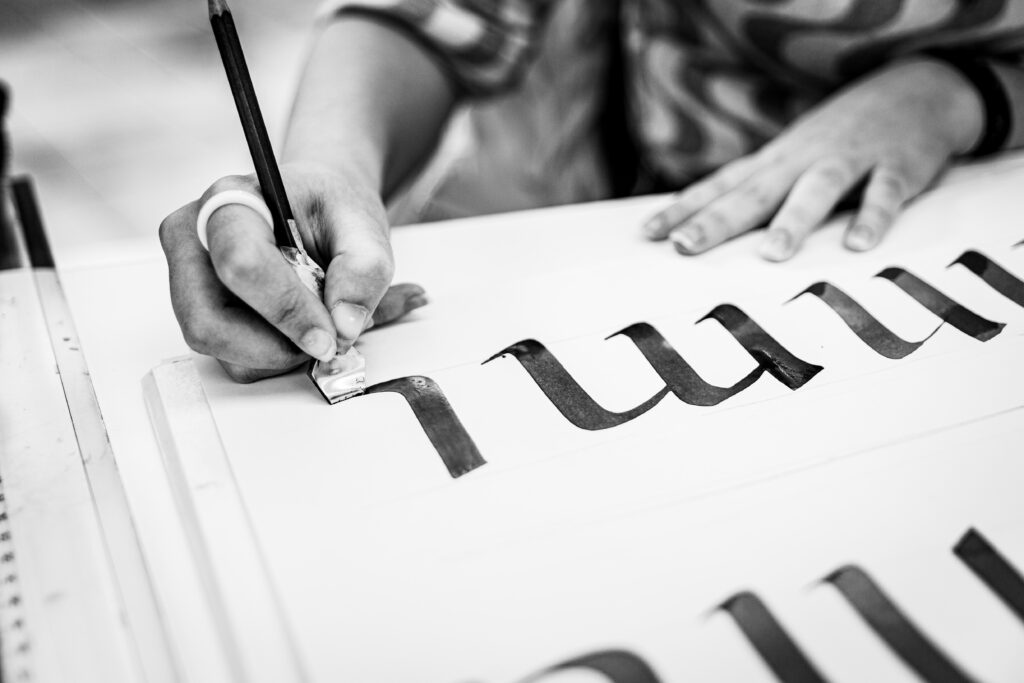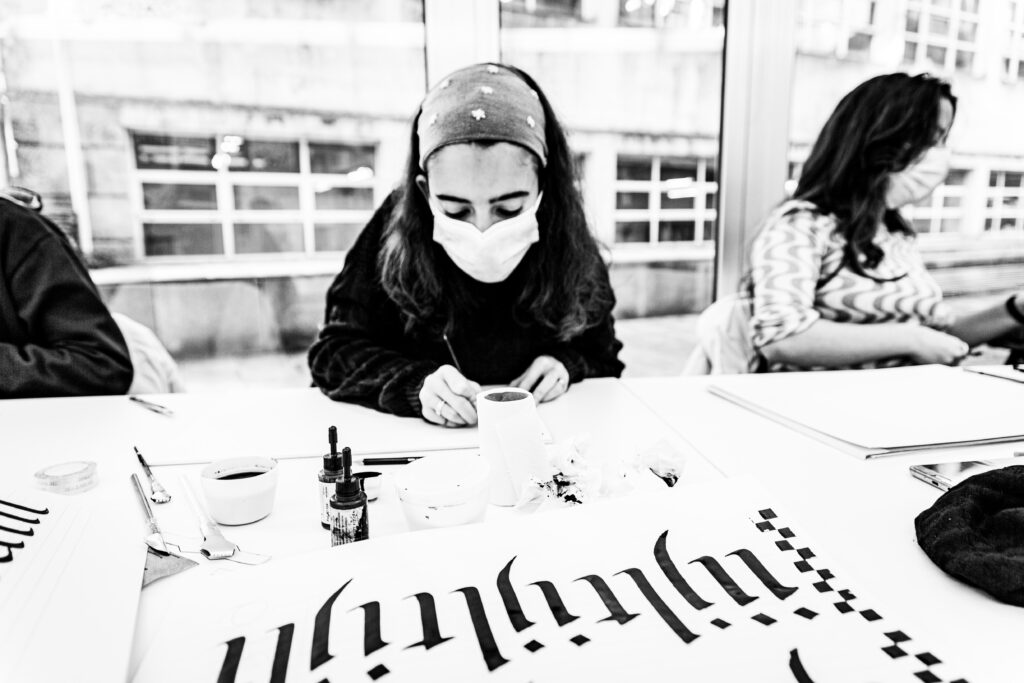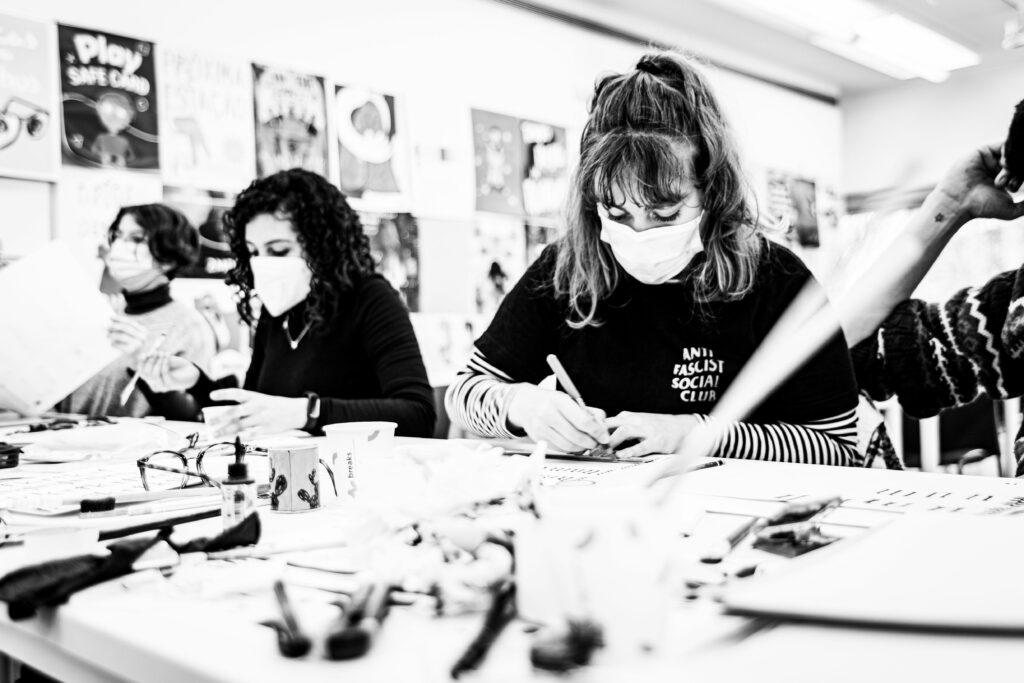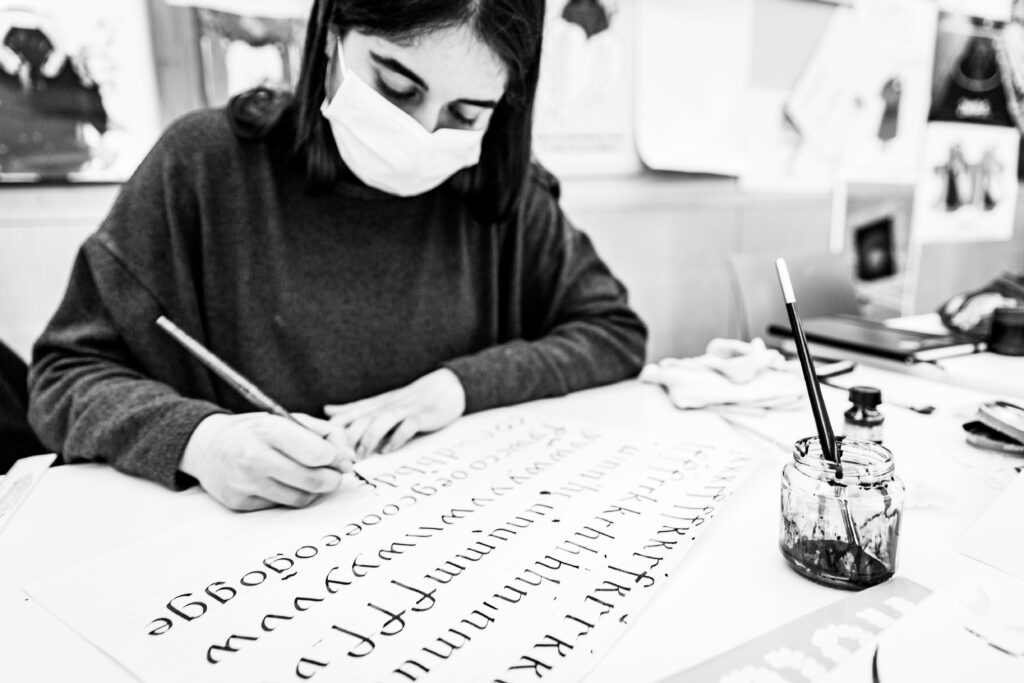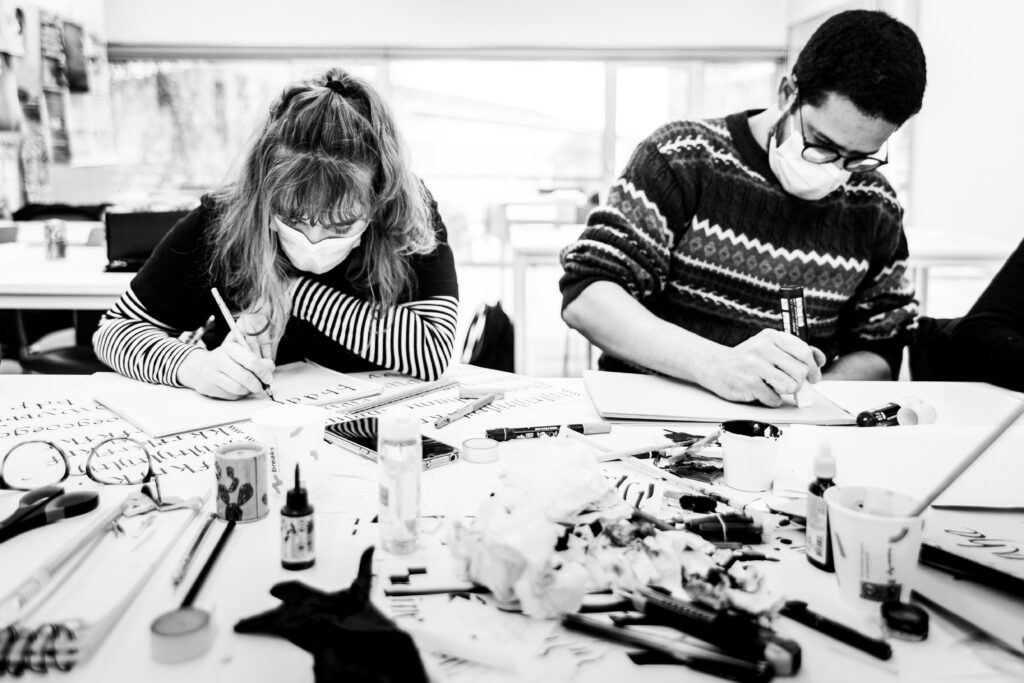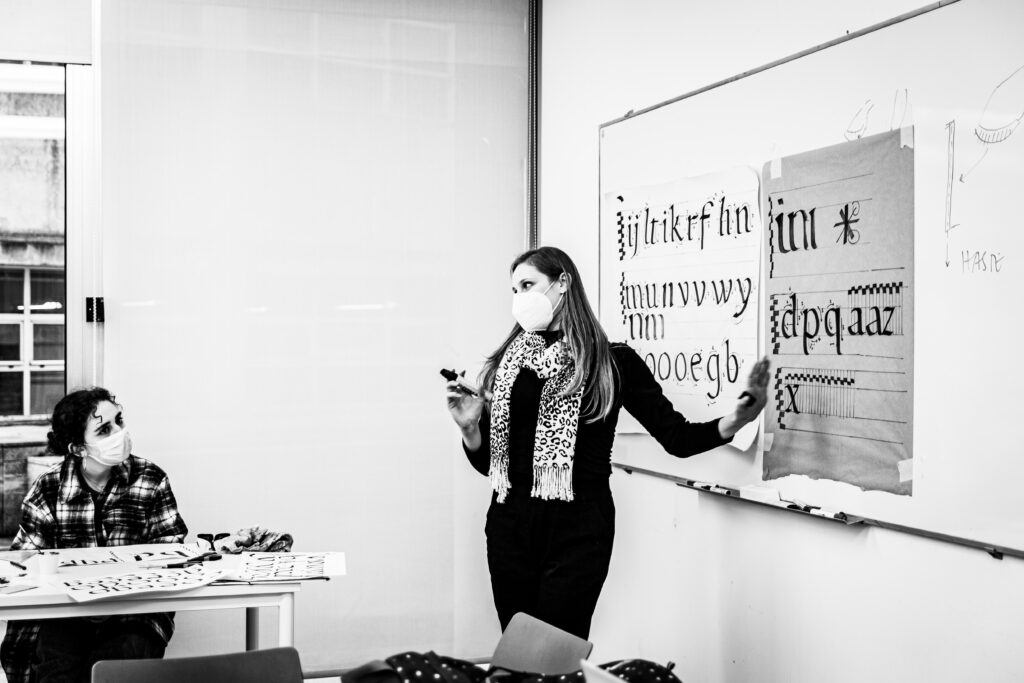In the past week, we hosted a calligraphy workshop, lectured by the visiting Design teacher and Ph.D. researcher Maíra Woloszyn. It was a one-day workshop, divided into two morning and afternoon sessions, where participants created their own tools —in order to better understand the relation between the stroke mark and its tool marker—, and were introduced or had the chance to practice a “foundational hand”.
The activities of the workshop focused on five main modules:
- Introduction: Maíra started the day in the morning session by presenting the main concepts —similarities and diferences between— writing, calligraphy and lettering, while presenting work from seminal international references (mostly from Brazil);
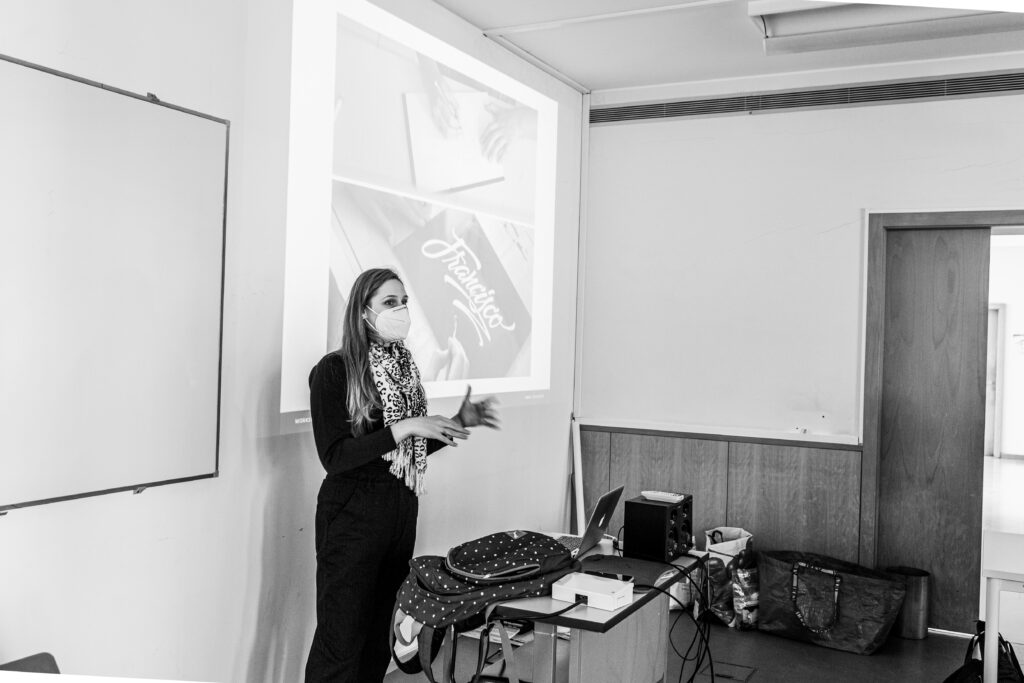
- Foundational Hand theory: she did a brief historical and technical introduction to Edward Johnston’s classic “foundational hand” writing model as was revived in early twentieth century;
[these were the fastest modules]; - Nib fabrication: we then proceeded with the construction of the handmade folded nibs. Maíra brought several pre-designed templates ready to be stencilled on the aluminum from the soda cans the participants brought. We cut and sawed several models — three sizes for the”automatic pen” model and at least one folded pen. The best results were obatined with the medium sized automatic pen, built from the aluminum from the offset printing plates, kindly donated by Norprint. While there was still time left in the morning, we started testing the pens and ink with warm-up strokes.
- Foundational Hand practice: the afternoon session started with the introduction to the foundational hand, practicing it in [letter] writing groups. This took almost all afternoon. Maíra’s method addressed 1) the main orthogonal strokes (stems and bars); 2) [serif] terminals either on the entry or on the exit strokes and the wavy nature of the nib movement; 3) curved [stem] bowls [and diagonals]. And then the main lettergroups starting with the 4) “simple” vertical stressed group of i j, and then l t; 5) a still omewhat vertical k r f group; 6) the h n m u group; 7) the v w y diagonals; 8) the c o e g round letters group; 9) the b d p q hybrid round and vertical group; 10) and finally the most difficult ones for last, the a z x s letters group.
- Word composition and spacing: using the final moments left in the day, Maíra invited all participants to aply their skills into composing a word, with special attention to letterspacing. She employed a custom metric solution, where the space of between letters is closely related to the letter counter and, of course, its main unit, the stem stroke width.

Overall, albeit a very productive workshop day, it was a very short and fast one. We enjoyed a relaxed environment —a nice change of mood from the hectic busy schedule from the semester classes— with a very engaged group of 15 participants.
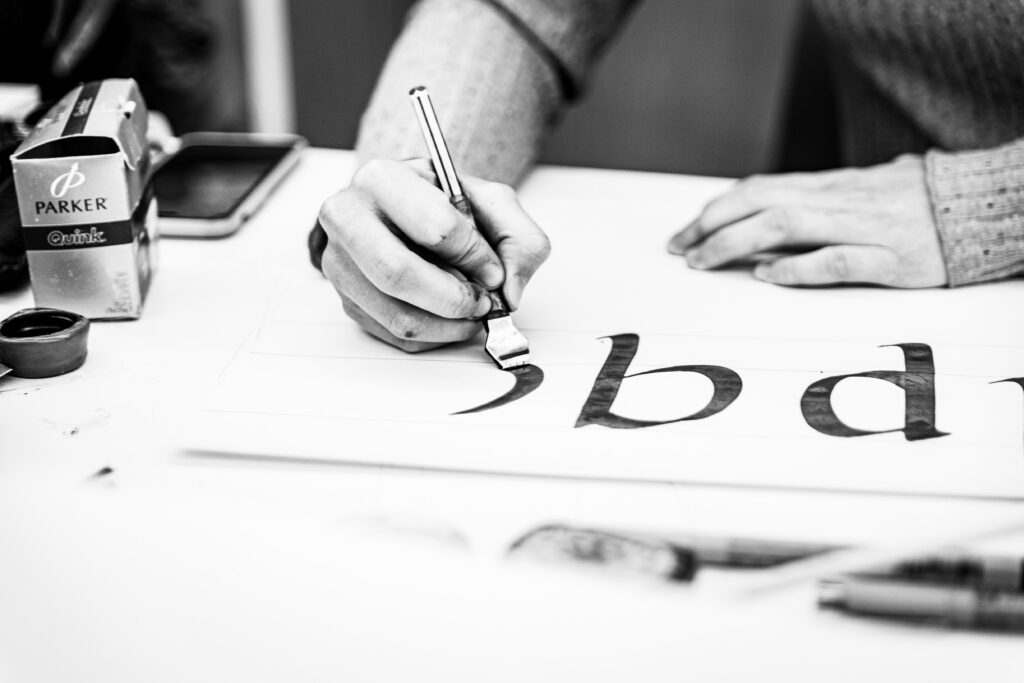
The tools —the custom-made “automatic pen” folded nibs— proved to be incredibly precise and reliable. Even with some of them breaking in the process. And Maíra’s take on the learning process —her own custom letter groups— provided a fast and steady learning curve. The results from the day were amazing, right from the first participants’ strokes.
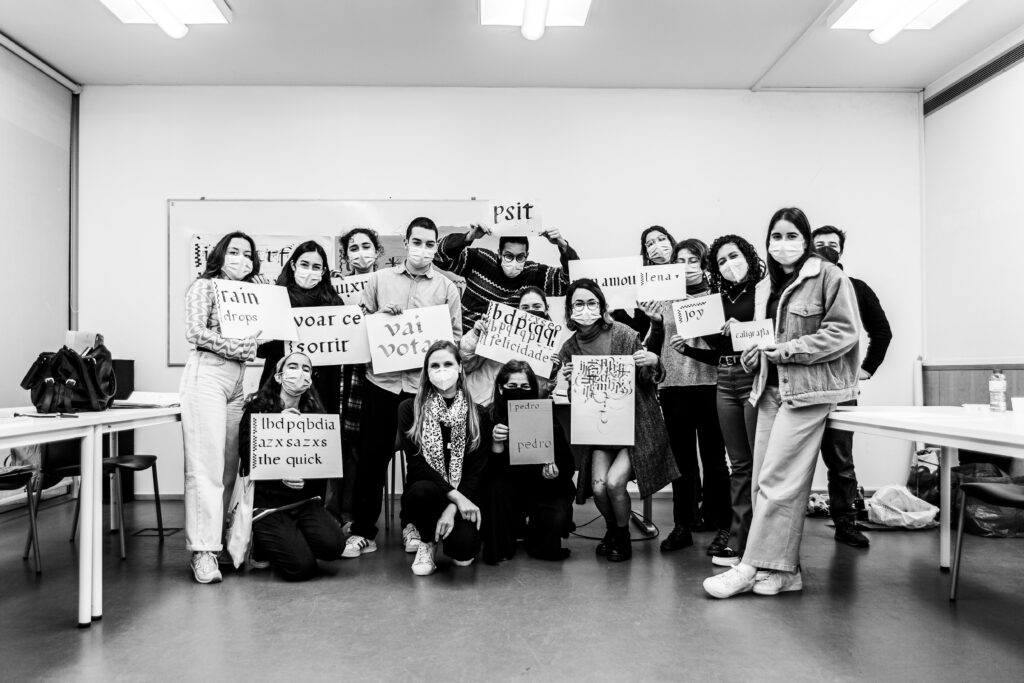
Once again, we’d like to thank Maíra for her availability and huge generosity in sharing her time and expertise with us. It was a great [learning] experience!
